
5 Ways to Faster and More Effective Feedback
In January 2014, I began my journey at Thoughtworks Quito. Prior to that, I was a journalist who never really enjoyed technology. However, when I worked as a writer for a tech magazine, I got absorbed into the world of technology. I got interested in Software Development after I heard a talk by Rebecca Parsons; she was a big inspiration. So, I started learning about technology through online resources, but at the end, Thoughtworks was my foundation.
A lot happened during my first year here; I had to learn everything from scratch. I attended TWU, was part of my first Software Development project, was involved in Social Change initiatives, supported technology events and so on. Nine months in Thoughtworks doesn’t seem long but when I try and capture all that I was involved with, it seems like I’ve been here for longer. And that’s exactly what I needed to do - to capture it all to share during my development and review exercise.
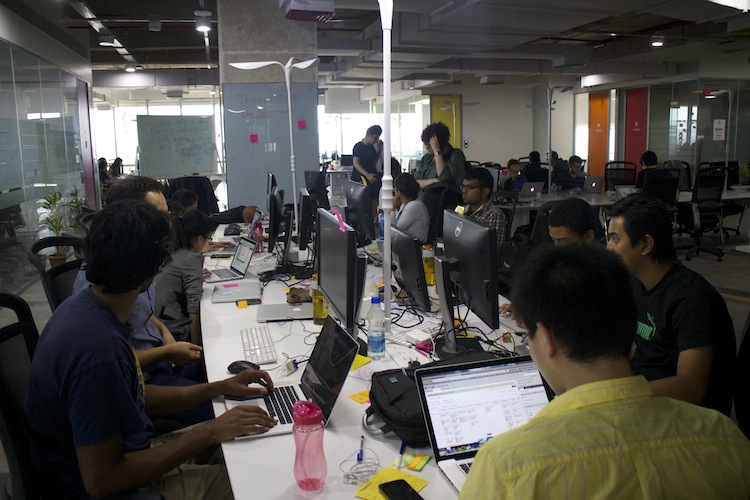
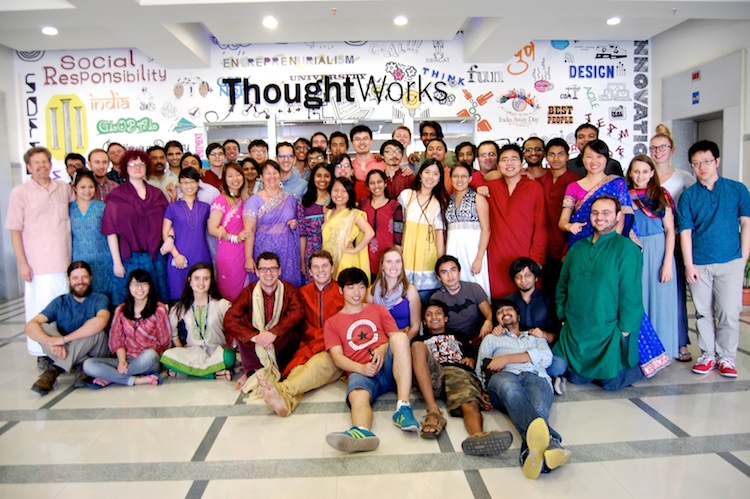
I started by making a slideshow, but realised after 30 slides that I was failing completely to get to the point that I was trying to make and not communicating what I wanted to. A fellow Thoughtworker suggested I talk about my journey like I were telling a story. I had spent 4 years in journalism and I was familiar with the simplicity of storytelling. I decided to use the 5W’s methodology to start building my story.
Using the 5 basic questions (who, what, where, when, why), I was able to build a story without beating around the bush. I was able to focus on my growth, development and involvement in the Organisation, as well as in the development of others in the company. I was able to set sufficient context. In addition to the 5Ws, I included the ‘How’ to my story, which made it more comprehensive.
In typical TW-style, I brainstormed (with post-its and sharpies) and arrived at my story. I want to share some tips from my journey of Continuous Development and learning.
1. Feedback is precious:
If you want to know what you did well and measure your development, feedback is an integral part of it. It was at this time that I realised the importance of collecting feedback and having it documented. In Thoughtworks, most of us have a person who takes on the role of a Coach, Mentor or Sponsor. Together with my Sponsor, I figured out a way to collect and document all my feedback. I used a spreadsheet on Google Drive. Having it all documented, helped me assess if I was reaching my goals and identify what areas I need to focus on. It helped me discover weaknesses, recognise strengths and set the next steps.
2. Prioritization is key
I had many ideas in mind when I put together my slideshow - the problem was that I hadn’t defined my goals. But I realised that the first step was to prioritise. I have to say that this was the most difficult part - recognising what was most important and focusing on small and measurable goals. In Thoughtworks, it is important to balance your goals between the three pillars. Something that helped me a lot was defining where I see myself in the future. The big picture allowed me to start breaking it into smaller goals and specific actions that could help me trace the path to reach those bigger goals.
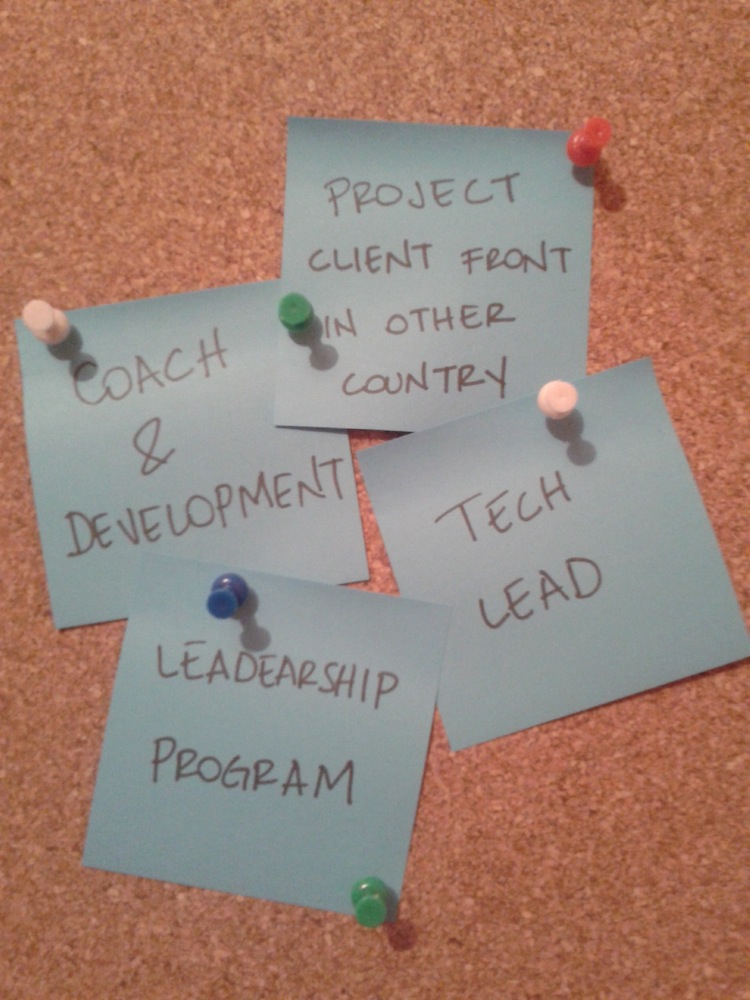
3. Chart out your roadmap
My coach suggested that I draw out all my goals on a timeline. This allowed me to balance what was most important within a given timeframe. First, I plotted where I thought I was and where I want to be. I used a measurement framework similar to the Dreyfus scale to help measure my ability and knowledge on specific skills. Once I did that, I drew my journey across the five specific areas that I wanted to focus on: personal, professional, learning, Social Change and Project Delivery. With this I was able to balance all activities and tackle all these areas, giving more importance to the ones I think I need to improve on without neglecting the others.
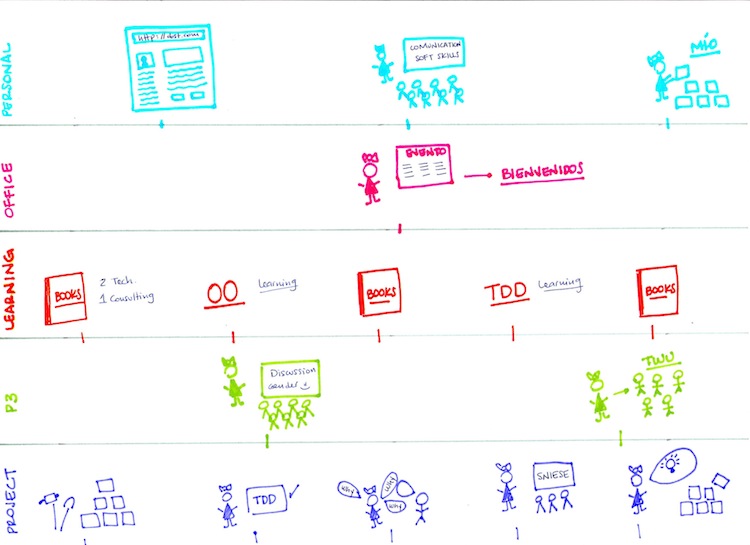
4. Actions-oriented focus
If you’ve done a retrospective before, then you will understand that the key is to set action items for the things that need improvement. I identified those elements so that I could measure and keep track of my progress. A top priority action was reading books, doing so with a purpose to progressively accomplish my goals. So, I put together a document to track my progress on the books I read. It could have up to 4 books prioritised; these were changeable based on my goals and the actual requirements. It included books in progress, and the books I was done reading. It also a included a list where I put all the books that could help me in the future.
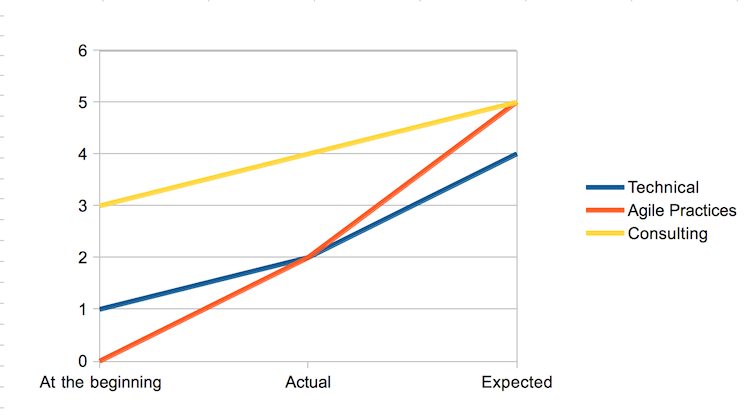
5. Long-term plan
We are all aware that plans change from one day to another. But, it's important to focus on what you want to accomplish and to keep it on your radar even if it isn’t on the immediate horizon. I identified my long-term goals so that I have an end vision in sight. I extended the timeline and postponed some plans to remind myself that at some point, I want to achieve them. I also believe that this will be useful as a starting point for further development and for the next review discussion.
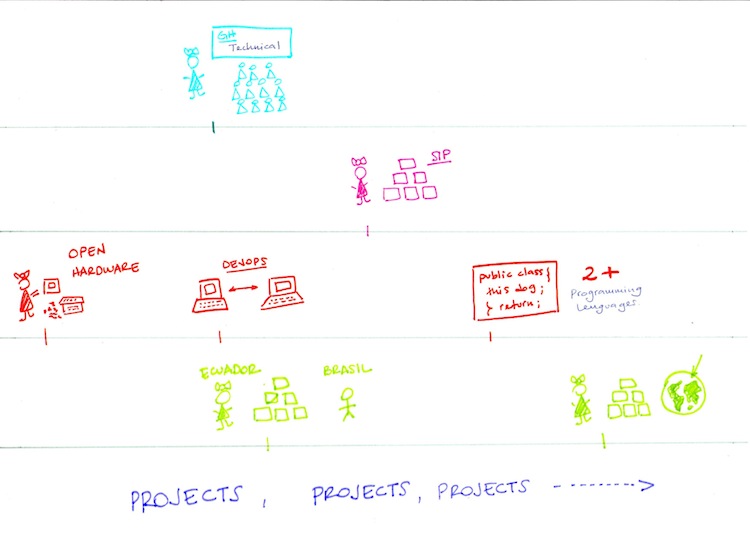
These five highlights helped me build and share my story in 15 minutes and most importantly helped me to set goals for the immediate future. As a closing note, one of the most important tips in my experience is to ensure that the story of your journey should reflect who you are and be representative of your personal brand. This was my way and it has a big part of who I am and what I want to be. Here’s wishing you a meaningful and productive journey!
Disclaimer: The statements and opinions expressed in this article are those of the author(s) and do not necessarily reflect the positions of Thoughtworks.














